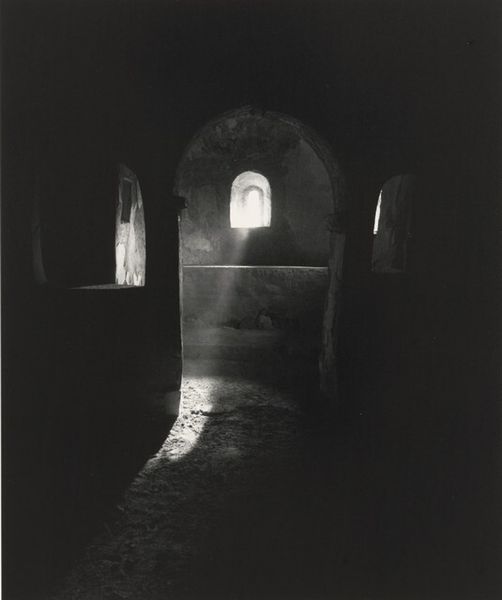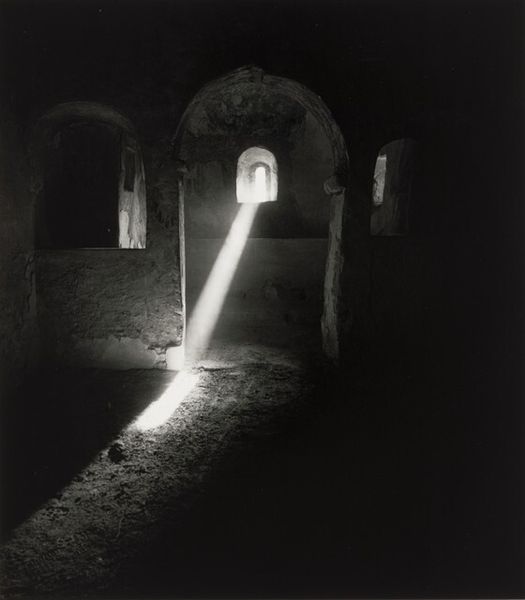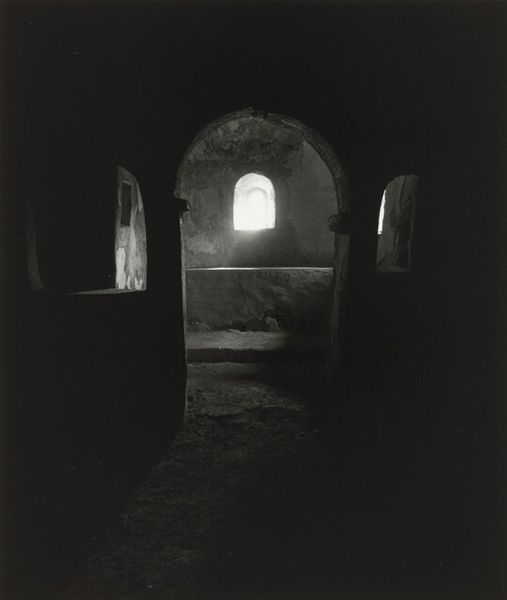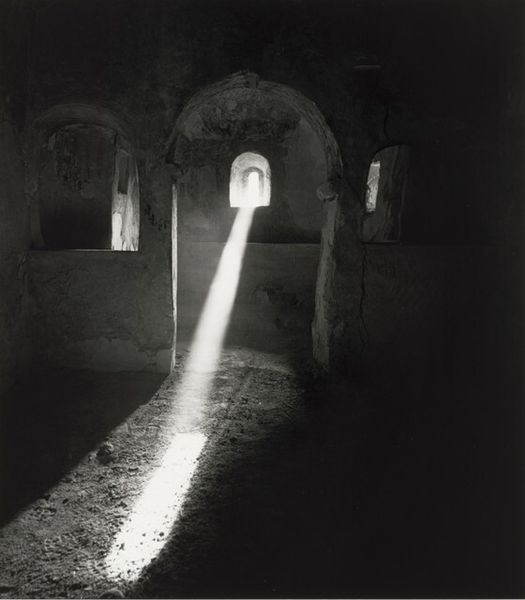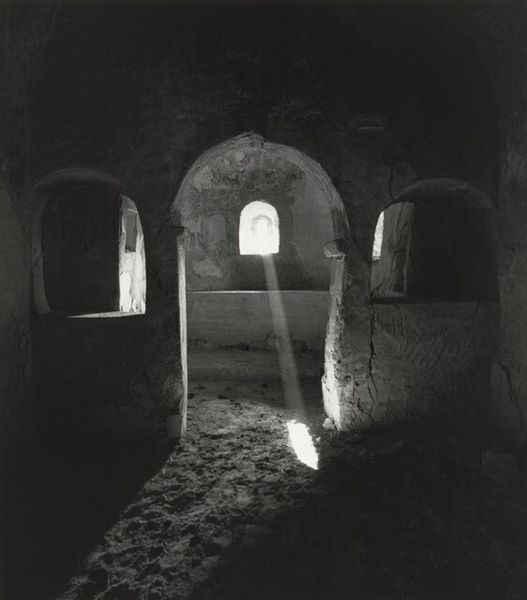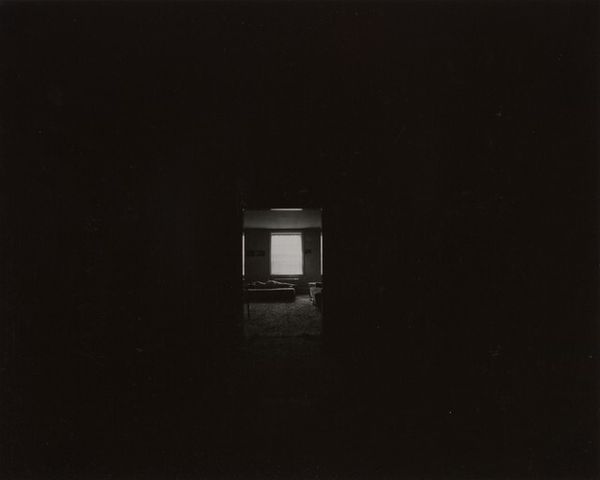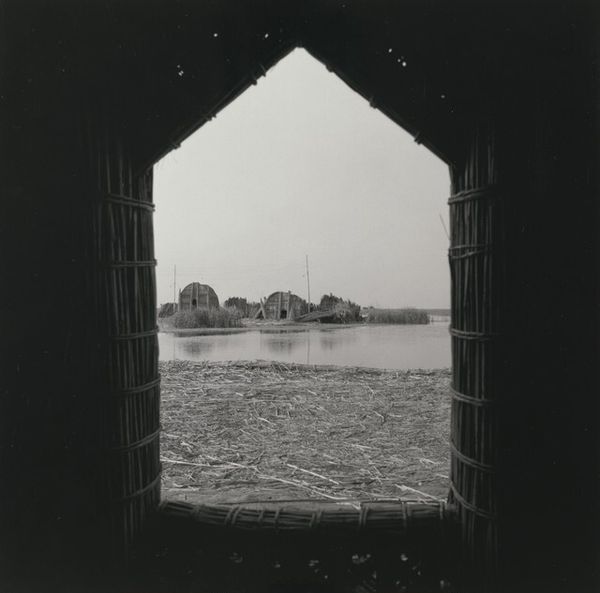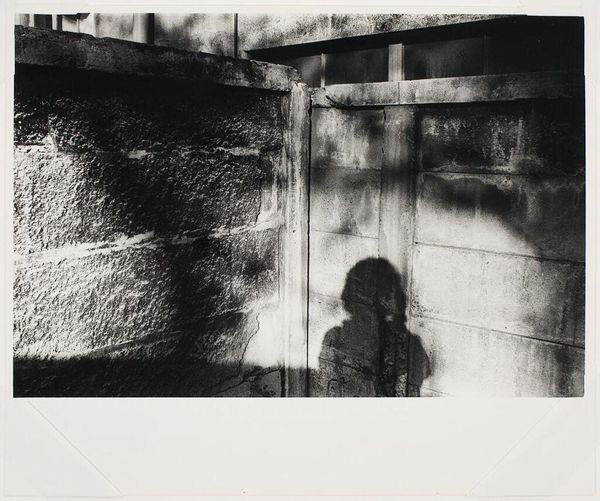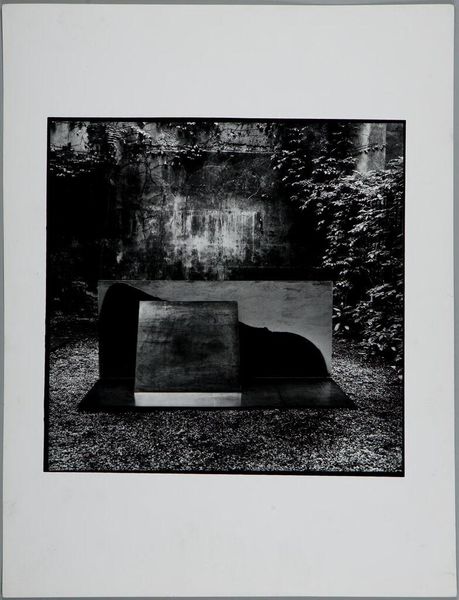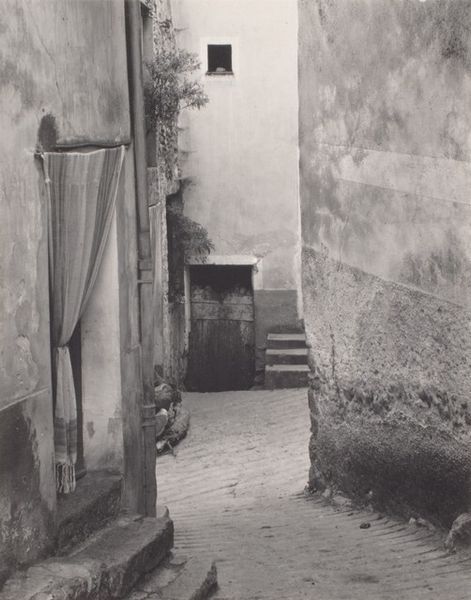
Esteban de Viguera, June 11, 1991, 9:30 - 11:30 a.m. 1991
0:00
0:00
photography, gelatin-silver-print
#
contemporary
#
black and white photography
#
sculpture
#
landscape
#
black and white format
#
photography
#
gelatin-silver-print
#
monochrome photography
#
monochrome
#
statue
#
monochrome
Dimensions: image: 27.5 × 24.5 cm (10 13/16 × 9 5/8 in.) sheet: 40.01 × 30.48 cm (15 3/4 × 12 in.)
Copyright: National Gallery of Art: CC0 1.0
Curator: What a stark, almost ethereal photograph. My immediate feeling is one of serenity, but also a sense of profound loneliness. Editor: Well, let's shed some light on Ursula Schulz-Dornburg’s “Esteban de Viguera, June 11, 1991, 9:30 - 11:30 a.m.,” a gelatin-silver print created in 1991. What we see here is the interior of a ruin, captured in striking monochrome. Curator: Monochrome certainly emphasizes the interplay of light and shadow. That single, strong beam slicing through the darkness… it’s geometrically perfect, yet so organic within this decaying space. Editor: Exactly! This isn't just a record; it’s a study of form and tone. Look at the gradations of gray – they articulate every surface, every plane of that dilapidated structure. But consider the labor too, Schulz-Dornburg, often explored liminal spaces affected by socio-political changes. Her materials—the silver gelatin print itself—bears testament to time. It connects this ruined past with a crafted, lasting presence. Curator: True, the print’s physicality reminds us of the process. Still, that aperture is arresting! It pulls you directly into the composition. It’s so strategically positioned, almost as if placed to highlight the inherent geometry, not the societal function. It seems like her placement here is purely for composition Editor: But doesn't it compel the question "why"? Why photograph that space, at that precise moment? Was it to document the abandonment caused by social or political change, to reflect on the lives disrupted or even those never built due to geopolitical influences? The time, the title--they are social timestamps. Curator: Perhaps, yet it is the artist manipulating the materials to shape the photo into pure visuality. The quality of the line created by the sun is not incidental and points to formal interest alone. It speaks of absence. What once was, is not and what might have been also fails to materialize. Editor: I think this speaks more deeply to Schulz-Dornburg's fascination with abandoned structures as a physical embodiment of political shifts. It also underscores the material reality, its own decay, reflecting the story in a singular piece. Curator: So much to think about when staring into the light, huh? I keep going back to that formal simplicity. Editor: And I to the story in every bit of decay and light that shines in what remains. Thanks for this peek at light, absence, material and loss!
Comments
No comments
Be the first to comment and join the conversation on the ultimate creative platform.

